Building Proficiency
Welcome back to the Science of Style series!
If you’re reading this, I hope you’ve read and completed all the action steps in Stage 2 – Modeling. If you haven’t done so yet, it’ll benefit you tremendously and you’ll see exactly why each of the action steps are so helpful towards your best style.
If you’ve been trying on some new looks from the modeling stage, you should be getting some positive feedback from your friends, but we’re not finished yet.
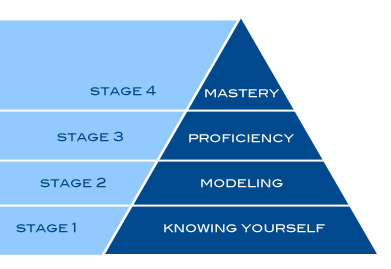 This post is going to focus on Stage 3 of the 4 stages model towards style mastery.
This post is going to focus on Stage 3 of the 4 stages model towards style mastery.
Stage 3 of mastering your own style is focused on getting you proficient in the art of phenomenal style. You’re going to implement timeless principles that will help you look your personal best. Once the fundamentals are down, we’ll also get into how you can add special touches that will really make a statement.
After some feedback from others, I’ve broken down this series into smaller parts for easier reading. It also gives you time to do the steps and gain real understanding rather than just reading long articles and feeling overwhelmed.
If you’re serious about growth, taking this information and putting it into action is very important. This is my purpose and motivation in writing this series – to really deliver the most effective guide I can give you towards creating your best look.
Alright, with that, let’s get to it.
Learning the Fundamentals
1. Fit
“It’s better to look like you’re wearing something that fits than like you’re wearing a trend.” – Sean Combs
This is the fundamental of fundamentals. If you forget everything and just fix this one aspect of your style, your image will take on a dramatic improvement.
Too many guys wear clothing that isn’t the right fit for them. Without a good fit, it doesn’t matter what you’re wearing.
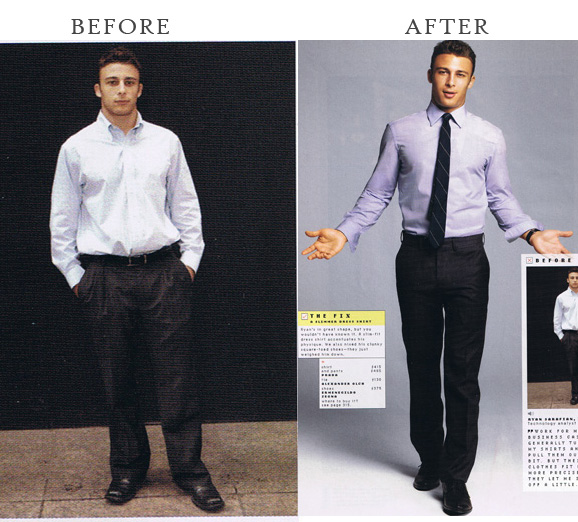
(Photo credit: GQ)
When I go wardrobe shopping with my clients, the first thing I teach them is how to shop for their body type. My clients quickly learn that I am ruthless about fit, an “okay” fit is unacceptable – it has to be perfect or we don’t buy it.
I’m understanding of guys who wear ill-fitting clothes though, because sometimes it just wasn’t a choice. Most men grow up getting help from women who know nothing about men’s clothing sizes. Who can blame them? It’s like having a man find a great dress for his girlfriend – nine times out of ten the dress isn’t going to fit right.
It could also be that you just haven’t taken the time to adjust your wardrobe to bodily changes. Sometimes you don’t notice that you’ve gained weight until a button goes flying into the trees, or that you’ve lost weight until your pants slip off even with the belt still buckled.
Whatever your reason, it’s not going to be because you’re ignorant or lazy. There’s no place for that here.
If you’re infected with what we call “Bad Fit Disease” (BFD), get yourself treated and tested with these action steps.
Action Step #1: Get Your Measurements
Do you know your measurements?
Knowing your true measurements by heart will ensure you get the perfect fit, every single time.
If you think you know your measurements but haven’t measured yourself in awhile, take a minute to get measured just in case you’ve grown or shrunk.
If you have measuring tape at home, you can ask someone to measure you, or it may be easier and more effective for you to go to your nearest dry cleaners or tailor and ask them to measure you.
Measure your neck, chest, waist (one inch below navel) and inseam (inner leg length – from your crotch to your feet). Write these measurements down.
These are the basic measurements you must know so you can shop more effectively for yourself.
You’ll need to know your neck size for dress shirts, chest size for blazers, and the waist and inseam is the measurement you’ll look for when shopping for pants, for example:
30/32 = 30 inch waist, 32 inseam
Kinowear tip:
If you have your measurements, and want to go the extra mile, choose a staple item such as jeans or a blazer and test out your best fit.
For example, since most guys love to wear jeans, my suggestion is to go to a designer store that specializes in jeans and ask them to help you find the most flattering fit for your body type. You don’t have to buy anything, but at the least, you should leave knowing what fits you best.
If you go to a high-end jean store like Diesel, you should ask one of the store clerks to suggest some pairs for your waist size. Also, ask them what type of jeans are most flattering for someone with your legs (stocky, slim) and height (tall, short). He’ll probably respond with the exact style of jeans including whether it’s boot cut, relaxed, straight, low-rise, etc.
Once you get it, try it on, and then get the feedback of the store clerk if they’re around. Do this at a few stores and get the style and measurements of the jean that is most flattering on you. The reason I say high-end designer store is because the store clerks at a Gap will probably be a lot less trained when it comes to this kind of stuff (and rightly so, they’re selling $30-40 jeans instead of $200-300 jeans at Diesel).
But before you do this, make sure you know your measurements!
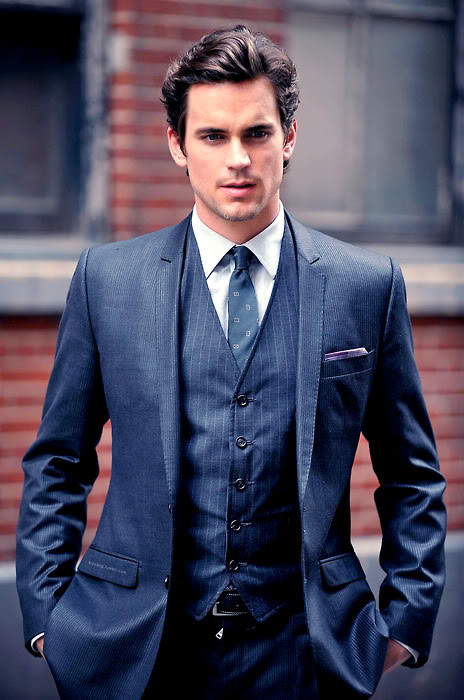 Fit Checklist
Fit Checklist
Here’s a short “fit checklist” for you, it will be very helpful to keep in mind when shopping for yourself. It’s not a comprehensive list, but it’s the essentials you need to know. I suggest printing it out and locking this into your memory for life-time use!
Key Fit Points
• Clothes should neither be too tight nor too loose – try to have it close to skimming your body.
• For jackets and shirts, the shoulder seam should line up at your natural shoulder line – right above the armpit. Too much sloping means you should try a smaller size.
• Raise your arms to your sides, there shouldn’t be too much extra fabric under your armpit.
Shirts
• For dress shirts, make sure you buy the right neck size. When the top button is closed, you should only be able to fit two fingers between the collar and your neck.
If you can fit three fingers, the shirt may be too big for you. If you can only fit one finger, then the shirt may be uncomfortable, especially if the fabric is going to shrink after washing and drying.
• Whether it’s a polo or a t-shirt, always follow the general fit points above. A shirt should skim your body, and the shoulder seam should match your natural shoulder line. If it fits your shoulders but it’s still baggy around the waist, you can get it taken in by a tailor.
• Dress shirts that fall past your buttocks are meant to be tucked in!
Note: The reason why dress shirts are made long is because they are meant to be tucked in. This is so that when you are sitting down you sit on top of your shirt and it prevents your shirt from rising out of your pants. If you like to wear your shirts out of your pants, try to find one that is already cut shorter or get them altered by a tailor.
Blazers
• To judge a great suit jacket (or blazer) fit, the jacket lapels should lie flat against the entire circumference of your shirt collar.
• No more than half an inch of your shirt collar should be visible above the back of your jacket collar.
• The length of a suit jacket or blazer should be just long enough to cover your buttocks, but still afford your legs maximum length.
• Check the length of your sleeves and make sure they touch the line right under your palm where your wrist meets your hand (get them tailored if it’s too long).
Coats/Casual Jackets
The fit of a coat or a casual jacket depends on what you’re going to wear underneath most of the time. If you are buying an overcoat that you’ll wear over a suit, you may want to go a size up from your usual size. Also, keep in mind that if it’s a fall/winter jacket, you may want a little extra room for a thick sweater.
Still, jackets and coats should fit your shoulders well with correct arm-length, as well as being the best proportion for your height.
Shoes
• It’s recommended that you shop for shoes towards the end of the day, your feet swell up a little if you walk a lot
• Wear the socks you’ll wear with the shoes when shoe shopping (e.g. don’t wear thick athletic socks when shopping for dress shoes)
• Stick one index finger into the back of the shoe behind your heel to ensure you have some room for comfort, while making sure they are not too big – you shouldn’t be able to fit more than that
• Always try on both shoes and walk around to determine comfort level
Pants
• To test the right fit, you shouldn’t be able to fit more than two fingers between the side of your hip and the waistline of the pants.
• Make sure the inner seam of the pants is close to your natural inseam (there shouldn’t be too much room under the crotch – but obviously enough room for comfort).
• Make sure they aren’t too baggy on the thighs, sticking out to the sides when standing straight.
• Make sure they hug your buttocks and fit correctly – avoid a “diaper butt.”
• Get them hemmed if they are too long, you should only have 1-2 creases at the bottom. You can also roll them up for a hip look.
• Remember, chinos and dress pants will sit on your natural waist an inch below your navel, whereas jeans will usually sit on your hips.
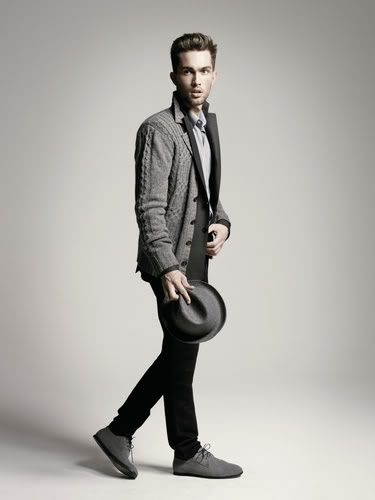
Action Step #2: Check Your Current Wardrobe
Go through your current wardrobe, and check all your shirts, jackets, and pants for optimal fit.
Make a decision with each item to donate, sell, toss, or get tailored.
In order to upgrade your style, you have to clear your current wardrobe of anything less than great. Now that you know the importance of fit, cut your losses and mistakes and move forward with a new standard. A great place to start for overhauling your wardrobe with the latest in menswear is my-wardrobe.com.
When you have no mediocre pieces in your closet, it’ll be hard to look mediocre.
Once you’ve done this, you’ll be a huge step towards looking your best all the time.
Minding the Details
Minding the details is the essence of styling. So if you aspire to become a master of your own style, it’s absolutely imperative you get good at spotting the details in fashion. The more you learn about creatively working the details of any look, the more you’ll appreciate and enjoy the little nuances that create your own unique style.
Not long ago, I worked with a client who before I met was pretty stylish in his own right. He contacted me and was clear from the start the he was very goal-oriented and knew exactly what he wanted in life. He’s a very ambitious entrepreneur who started his own company and is doing pretty well for himself. He told me he had been working on building his style for awhile now, and was happy with his image, but wanted to take it to the next level. I appreciated the way he approached his style development with the same vigor and passion that he seemed to bring to every other area of his life.
I was very interested in seeing the image that he had said to have been creatively working on for years. We first decided to meet up at his place so I could take a look at his wardrobe. When I walked into his living room, he showed me that he had built a habit of collecting inspirational photos from magazines and fashion photos online, a tip he took from reading this blog. I was impressed by all the stylish clothes he had in his closet, which he told me he grown from shopping all around the world as well as thrift stores in the city. He also added he didn’t spend that much money through careful selection. Awesome.
I was beginning to think that he didn’t need my help, but I knew I had to see him in some of his favorite outfits so I could give him direct feedback. He agreed and went into his room to change into one of his favorite outfits. He seemed to have a very good sense of putting together outfits, but he wasn’t fully confident. After a quick glance, I knew exactly what we had to work on in order for him to take his style to the next level. We had to hone in on all the details.
His outfits were great, but with each outfit, one or two tweaks was all it took to reach another level. For example, one of his favorite outfits was a purple polo shirt, a tailored khaki blazer, a pair of tweed shorts, and boat shoes. He looked great, but to make his outfit even better (following his sense of style), I told him to push up his blazer sleeves, add a clean white pocket square, and a braided rope belt that he had inside his closet. It was hilarious watching his eyes get wider as he looked in the mirror, it was like he had an epiphany. He loved it.
We then went to a nearby store and found a pair of brown suede loafers that he loved, and added it to the rest of his outfit. I told him to wear them without socks for a cool laid-back touch and it all came together into one killer outfit.
We went back into his closet and tweaked every single one of his favorite outfits, minding the details and going over how he can take each look to a whole new level of expression – all in ways that he loved. Sometimes it was just adding a tie clip or unique cuff links, other times it was bigger but still subtle things like pairing the right fabrics together, teaching him what colors worked better together, adding or removing a layer, using a special tie or scarf knot, and so on.
It’s hard for me to guide you on how you can mind the details of your own unique image unless I work with you 1-on-1. However, here’s a very useful exercise that I did with my client during our time together that you can do as well to train your eye for details and take your look to the next level like my client.
Action Step: Detail Spotting Blitz
Using the fashion purchased in the earlier exercise, go through and circle with a sharpie all the details that accentuate an outfit. As an exercise, I usually rip out all the ads and then just “blitz” through the pile with my clients, circling every detail that stands out. I also do this at home with my own magazines.
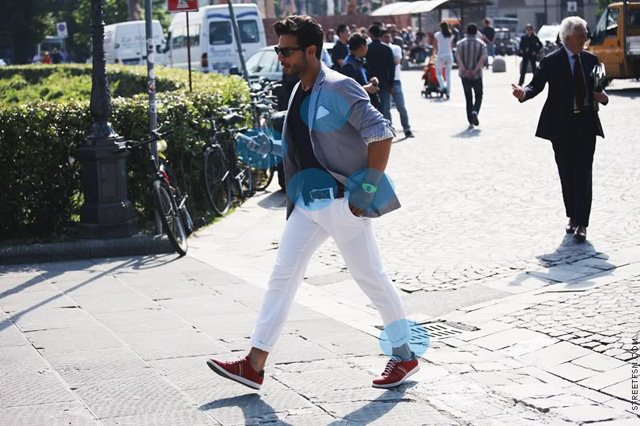
Try to not only spot the clothing and accessories (i.e. scarf, tie clip, pocket square) but how certain pieces are being worn (i.e. ways sleeves are rolled, going sockless, tucked in/tuckedout, color pairing).
Do this for at least 10 images.
Doing this will develop your perception for details in outfits, giving you a better eye when developing your own outfits. You’ll get quicker with each ad, and you’ll be a pro at spotting stylish details in no time.
What you’ll then start noticing is that when you start dressing yourself in the morning, you’ll have a memory bank full of these details that you can access and incorporate into your look.
Do this every time you read a fashion magazine, enjoy it and treat it like a game. Have fun with it.
Trust me, if you make this a habit, and implement these details in your own way, it won’t be long until you become a master of your own style.
Try it today.
Want professional one-on-one styling of all the details?
Consider getting a free initial consultation with us at kinoimageconsulting.com. Our services are designed to help you quickly make those razor sharp tweaks that most guys miss and take those average outfits to total head-turners.
Creating Complete Outfits

The practice of building complete and attractive outfits is an essential skill on the road to style mastery. What I mean by a “complete” outfit is a look that attractively blends together from head to toe.
My goal through this article is to have you step in front of your closet every morning, confident that you can put together an entire outfit that works for any occasion without blinking an eye.
Let’s do this.
Action step #1: Thinking in Outfits When Shopping
One thing I noticed from thousands of hours of shopping is that men just don’t take the time to build complete outfits when shopping.
Most guys will shop very fast with a single goal in mind – like buying a new pair of jeans to replace their currently worn-out pair, or a single t-shirt to add to their rotation. There’s nothing wrong with this, unless your goal is to actually expand your wardrobe.
If you want to become a master of your own style, you absolutely need to think in outfits when shopping. This one small paradigm-shift will be an enormous breakthrough in your style.
Instead of just shopping for what you immediately need, try creating a completely new outfit from head to toe next time you visit your favorite store.
If you remember, in Stage 2 we went through “Modeling” where we copied looks from magazines or manikins. At this point, if you’ve done the previous exercises, you should have a good sense of what you like and a repertoire of outfit ideas. Now you can put yourself to the test – try to put together a complete outfit without asking a sales associate for help at first, or copying a look straight off a store manikin. It can be helpful to ask for an opinion after you put together a complete look, but avoid asking for help beforehand.
For example, if you see a jacket or a shirt you really like, go around the store and pick a pair of pants and shoes to match. If this isn’t a challenge to you, pick up some accessories that you think will go with your outfit (e.g., belt, hat, scarf). Take it all to the fitting room and put it together.
Chances are you need more practice than you first imagined. This is why it’s important to adopt this habit.
I urge you to always “think in outfits” next time you step into a clothing store, and try to put at least ONE complete outfit together. You don’t have to buy anything. Do it purely to exercise your creativity and for fun; and who knows, you could end up getting some killer wardrobe pieces that you never thought would work together.
Layering
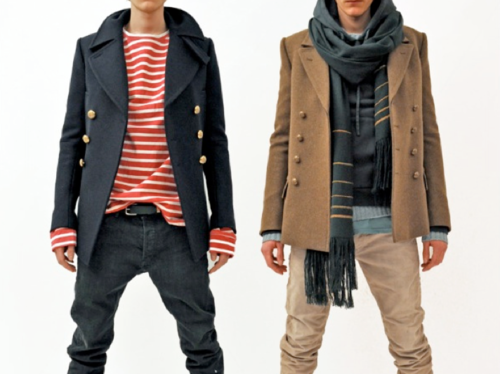
When you’re out shopping and putting together full outfits, make sure you’re experimenting with multiple layers as well. Any of us can pick a random shirt, pants, and a pair of shoes, but how are you when you have multiple layers and things get more complicated?
Experiment with layering and practice creatively mixing your clothing options into dozens of different looks. Become a pro at this, and you could even take your current wardrobe and discover a ton of new outfit combinations.
When I was living in Asia, these guys were absolutely masters when it came to layering. I hung around guys who took less than 10 pieces in their closet and made it look like they bought something new every week.
The key to layering flawlessly is to create an outfit that is totally complete. Making sure that every item is there because it needs to be and not because you threw it on in a rush. Each piece compliments the other to create a cohesive and attractive outfit.
The key to layering is the overall affect. Step back and ask yourself, “Is this too much?” When in doubt, remove something. When you’re layering, you shouldn’t be wearing too many attention-grabbing pieces at once. Not only does this often come off as try-hard, but will look too busy unless done carefully.
If you’re at home right now, take a look through your closet and put together at least 3 different outfit combinations through layering. I do this with my clients all the time and they’re so surprised at how many new outfit possibilities there are in their own closet.
Pick one to wear out tomorrow- something you’ve never worn before.
Short on ideas? Here’s a step-by-step guide on creatively coming up with outfits out of your own closet:
Action Step #2: Creating a Wardrobe Module

A wardrobe “module” equals one jacket, two bottoms, three tops, and two shoes for each bottom. (Five wardrobe modules are a good number for each season.)
When putting together a wardrobe module, you…
1. Lay the third layer (for example, the jacket) on the bed as if it’s on the body.
2. Find the best two bottoms that work with that jacket by laying them on the bed with the jacket.
3. Find the best three tops that work with the jacket and either bottom.
4. (If you’re wearing a suit) For each shirt that requires a tie, find at least one or two ties that work.
5. Find the shoes and belt that work with these combinations.
6. Find jewelry or accessories.
7. Find appropriate underwear for this module.
8. Find appropriate outerwear for this module (if the season calls for it).
Now you have a great outfit combination that you can wear together.
Apply these steps when you’re out shopping and before you get dressed, and before you know it I guarantee that you’ll become 20x more creative – naturally putting together new outfit combinations every single day.
Dressing to Stand Out
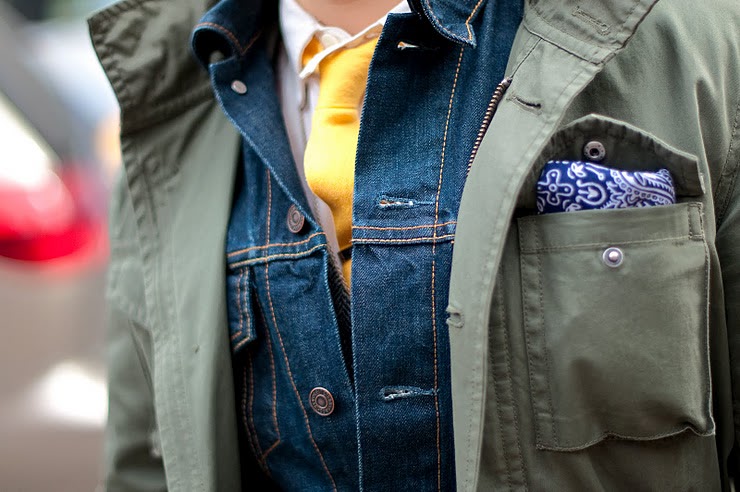
“Clothes make the man. Naked people have little or no influence on society.” ~ Mark Twain
Previously, I wrote about how to become an expert at putting together complete outfits. If you continue with the right habits, you’ll soon have the skill of building a flawless outfit combo with ease.
Still, looking great isn’t always enough – sometimes situations call for us to look outstanding.
Like when you want to make a killer impression during a job interview, or go all out for your birthday bash.
My goal today is to push you a little out of your comfort zone and get you prepared for those special moments.
So where do you begin?
When you’re dressing to impress, choosing a great outfit is easiest when you first consider the context that you’ll be in – whether work, a romantic date, or a birthday party.
As an example, let’s choose a romantic date as your occasion. Where are you going with your date, what kind of impression do you want to make? I’m going to say you’re going to have a casual first date, hanging out at places that you can talk and enjoy each other.
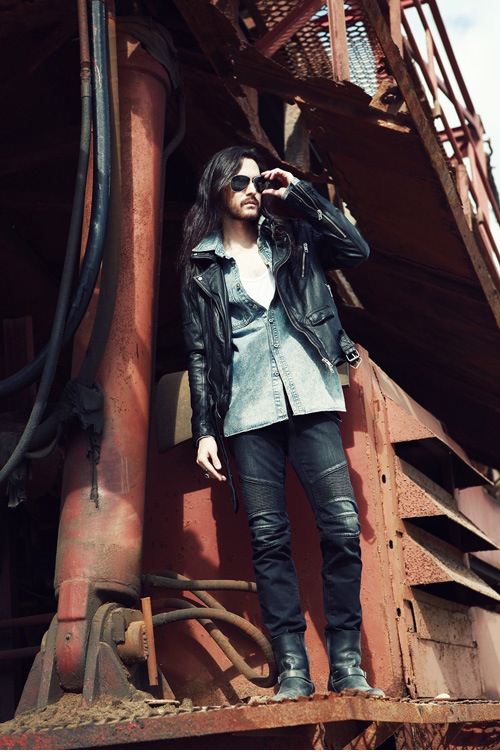 For example, let’s say you choose to hang out in the city with your date – enjoying a nice brunch at a cafe hotspot and then hanging out on the grass at Bryant Park. It’s a bit chilly out, so you choose to wear your favorite fall leather jacket.
For example, let’s say you choose to hang out in the city with your date – enjoying a nice brunch at a cafe hotspot and then hanging out on the grass at Bryant Park. It’s a bit chilly out, so you choose to wear your favorite fall leather jacket.
It’s a casual date so you want to be relaxed for the park – comfortable yet relaxed. You might want to sit down in the grass so you don’t want to wear anything that will wrinkle easily like chinos, so you go for jeans.
Let’s say your leather jacket is pretty loud with a lot of zippers and buckles like shown in this photo, so you keep the rest of your outfit simple, without too much color or accessories.
You choose to wear a white v-neck t-shirt, layering it with a blue denim shirt to go with the rugged feel of your jacket.
You wear your leather boots to match and your favorite shades for the sunny day.
That was easy. You’re ready for your date.
Don’t you wish it was this easy putting together an outfit for any occasion?
I’ll break down what I do for my clients and the process you can use to put together a head-turning look:
Choose Your Stand Out Piece[s]
Considering the occasion and how loud you want to be, begin by looking for a stand-out piece to add to your outfit. Sometimes, all it takes is a single piece to take your look to a memorable level.
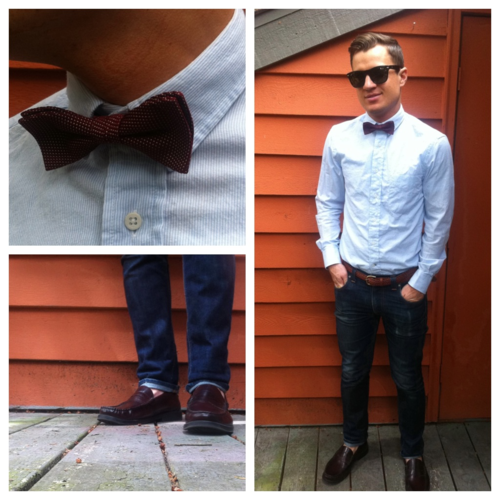
Some examples would be:
- unique neck-tie / bow-tie
- fashion-forward jacket
- a unique pair of shoes
- eye-catching accessory or jewelry
- memorable graphic t-shirt
- a fashionable pair of shades
- a bold colored item
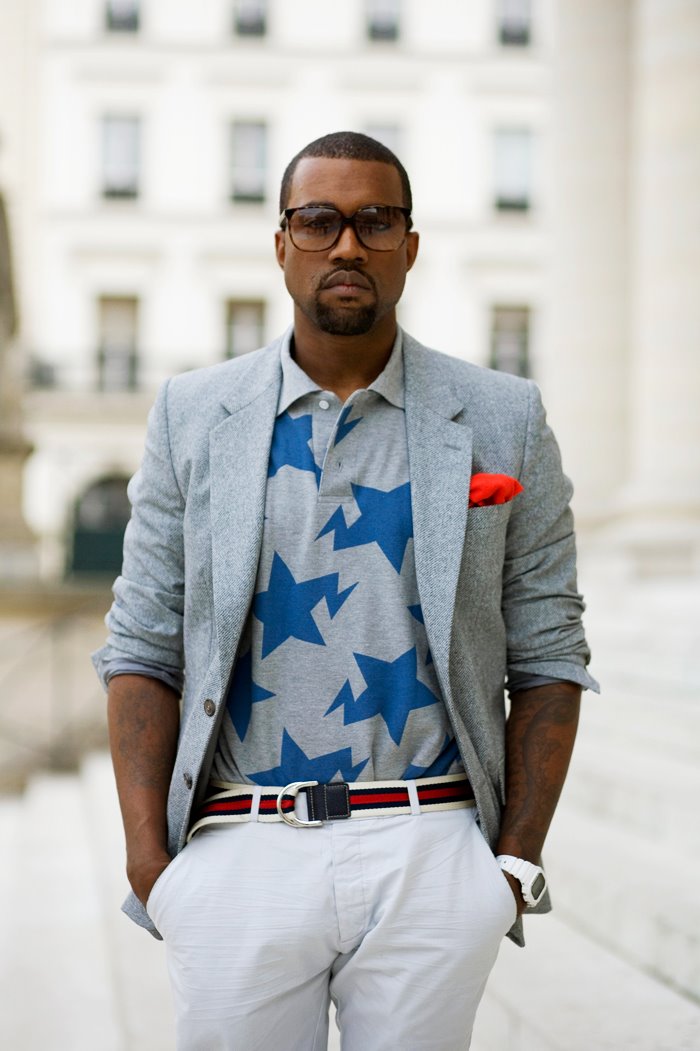
Found something? Great. Now you want to take your stand-out piece and find items to go with it, creating a complete outfit.
As you’re doing this, I suggest balancing out your outfit around the first item you chose – this makes it easier to create an outfit that works together.
Think of your accent piece as the showcase, and everything else as supportive pieces.
For example, if you have loud colorful jacket, you may want to neutralize the rest of the outfit with softer colors and little-to-no design.
Start simple – then build on it.
Add a Stylish Touch
Once you have a complete outfit, before you add any accessories, add a few stylish touches to bring life and fun to your overall look.
Here are some techniques for accentuating some of your outfits:
- push up blazer/jacket sleeves
- go sock-less with your dress shoes
- half tuck to reveal part of belt/buckle
- open one or two buttons of dress shirt and loosen tie knot to start at first closed button
Action Step: Building Your High-Octane Look
Alright, let’s put it all together into a killer outfit now.
What is the occasion/setting? Where are you going?
I like to start by picturing what I think the average guy might dress like where I’m going, and take it up a few notches from there. This gives you a good base to start with.
What’s your main stand-out piece going to be?
Decide which part of your outfit is going to be the “center piece” if you will. Whether it’s your favorite jacket, unique pair of pants, or t-shirt, choose it first.
Create a complete outfit
Once you choose your main stand-out piece, decide what you’re going to wear with it. Make sure you have a complete outfit that works together from head to toe.
Choose your accessories
Depending on the setting, can you add an accessory or two? A hat, scarf, tie, watch, bracelet, or necklace? If the outfit is already busy enough, make sure to maintain a good balance and not overdo it. If you feel that the outfit is very basic and it needs some flair, add a piece to bring some life into your outfit.
Add your stylish touch
Are you gonna roll up your sleeves? Leave a few buttons unbuttoned? Show off your belt? Maybe you’ll flip your collar up today. Go for it.
Balance
Once things start coming together, step back once more and assess whether you’ve gone overboard. You want to dress to impress but not be screaming for attention either – it’s a balance. Sometimes when you’re adding accessories it can get a little crazy (sometimes I find myself removing more pieces towards the end than adding).
Make sure you have one main showpiece and have the other pieces complimenting it (not competing against it). Make sure that you don’t have too much color (more than 3 different colors make an outfit too busy).
So how do you know you’re ready for Stage 4 of style mastery?
( ) You are confident with all the basic style fundamentals (great fit, attention to detail, etc.)
( ) You can create a complete and stylish outfit from head to toe out of your closet with ease
( ) You’ve been on at least three shopping trips where you’ve experimented with layering and creating complete outfits
( ) You are confident at layering and using high-octane items to create looks that stand out as desired
If you can honestly check off all these points, I respect you a ton for taking your style into your own hands.
I hope you’ve adopted some habits you can take with you for life. I also hope you’re having fun and enjoying the process of building your style!
When you’re ready, read the next article Science of Style: Stage 4 – Becoming a Master of Style.
Weekly Kinowear shopping tip: For readers looking for plus size men’s clothing: Our friends at Menswear UK offer sizes up to 5XL in a wide range of styles and colors.
Enjoyed this article? Follow Kinowear on Twitter!


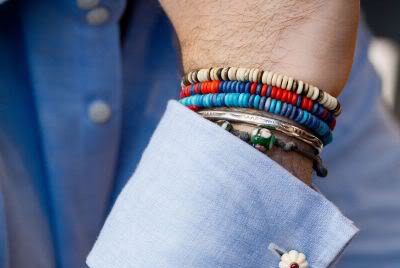

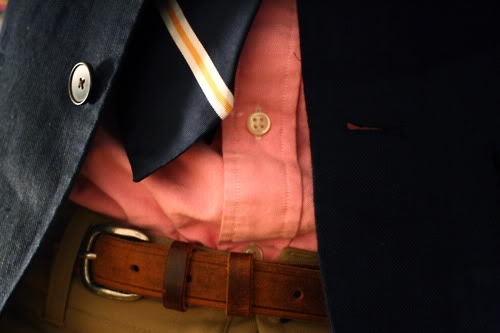
I have been following this site for last 2 months, I love you guys, keep up the good work, cheers
Very useful and great tips on perfect fit. I was looking for something like this. Still the ideal chest and waist measurement for shirts and jackets have been overlooked/excluded.
I was wondering, is the fit of the pants (slim, modern, straight, relaxed, bootcut, etc) a matter of only personal preference? Is slim, but not super slim/skinny the usual way to go? Do different occasions call for different types?
Thanks!
Jae, dude, you make the world a better place. Thank you so much 🙂
I’ve been following Kinowear for years (I used to post on the forums years ago), and somehow I drifted.
Now I come back to the The Science Of Style, which could easily be a full-fledged product line.
Fantastic stuff man, starting from qualities + principles as a foundation is probably the most powerful piece of all this.
My style’s been up and down, over the years, and I recently lost my entire wardrobe, (I mean down to 1 pair of jeans and a tee,) but I can feel my iconic style yearning to be expressed.
@ Jason Fonceca
Jason, thank you very much for your kind words. Your encouragement fuels me on! I’m sorry to hear that you lost your entire wardrobe!? Maybe it was a blessing in disguise 😉
This is a really good site for style. Thanks, guys. Keep the articles coming.
I’m glad I came across this website. Lots of great info.
I recently realized that all my dress shirts and t shirts don’t fit the way they should. I’m a tall guy with a slim build so I usually go up in size to get longer shirts.
Do you have any advice for someone whose trying to overhaul their wardrobe on a budget? I can’t exactly go and throw out everything that doesn’t fit all at once or I wouldn’t have any shirts to wear.
Excellent read and great advice! I find it a bit ironic that I’ve always heard the same advice or similar from other articles or websites and I never listened to all of it. This program is what I needed! Thanks, Jae!